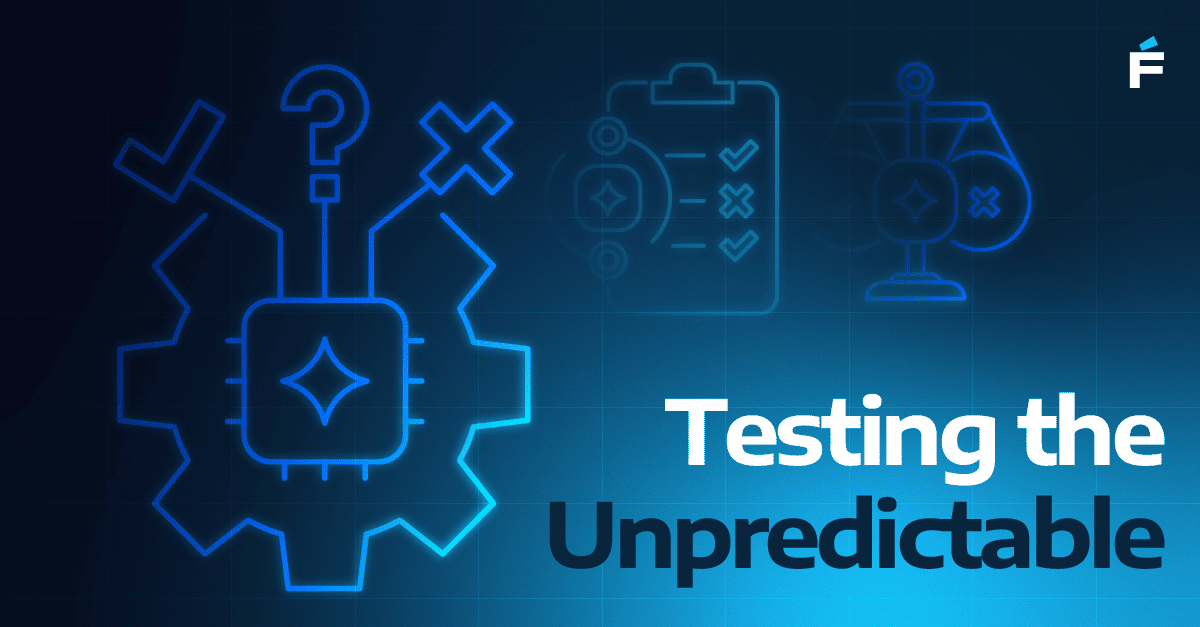Introduction
The world of online environments grows and delivers new challenges for the software testing industry every day. The pressures to get products to market and scale their production often weigh heavily on development teams of all kinds. Today, businesses understand why quality control is important, and are looking to get the most value out of their software development must keep up-to-speed on current software testing trends, including best practices in terms of security and performance.
In addition to keeping up with how industries and technologies are changing, quality assurance (QA) analysts face an increasing myriad of issues on a daily basis. For product leaders looking to reduce their time to market, we’ve outlined the latest trends in quality assurance that can help accelerate release cycles while maintaining the highest level of software quality.
Upcoming technologies in software testing
The future of software testing and the technology landscape is changing. Emerging trends in quality assurance are more relevant than ever for companies and testing professionals, as modern customers live in the “always-on” mode and require everything to be at their fingertips.
As the number of applications organizations use grows, and as safety- and security-related costs increase, software testing now receives more attention than ever before — and for good reason. According to the World Quality Report, sixty percent of organizations list cost as the greatest test environment challenge. Testing budgets have become increasingly inseparable from software engineering budgets, as QA is now more embedded in the development cycle due in part to the rise of practices like DevOps and continuous testing. As a direct consequence, more businesses are beginning to appreciate the value of quality assurance by looking for software testing consulting companies to assist them with this specialized work.
For example, the growth in the mobile market has prompted increased use of mobile applications QA. Mobile QA and testing is now an essential component of many companies’ development strategies. When it comes to testing technologies, there is no single standard tool or consistent methodology. Increasingly, companies look for on-premise and cloud device farms to cut down on the in-house infrastructure required for testing applications. Case in point: there’s no need to wait for customer feedback to fix inconsistency, as the QA team receives the results easier and faster.
While AI is a helpful tool that nakes automated testing tools and QA activities in general more efficient, it in no way negates the need for skilled testing professionals who can develop a cost-effective, quality testing solution. Furthermore, user testing with real human beings is still an essential component of ensuring your product is working, user-friendly, and valuable to your customer.
If you’re looking to re-strategize your project development, or re-skill your team, here are a few latest QA trends to keep in mind for 2021 and beyond.
Top 7 software testing trends in 2021
1. Artificial Intelligence for automation
It is expected that the use of artificial intelligence (AI) will continue to grow in just about every facet of innovative technology, due to the growing number of applications we use in our connected world. New investment in AI is expected to be $6-7 billion in North America alone. By 2025, global investment in AI is forecasted to reach nearly $200 billion. This is the result of the constantly evolving amounts of data utilized in software applications, which require ever-increasing test coverage.
Software testing teams can leverage AI and machine learning (ML) to improve their automation strategies and keep pace with frequent releases — with the help of reporting and analytics. For example, QA engineers can utilize AI algorithms to identify and prioritize scope for further test automation. In addition to sorting out test loads, AI-powered testing applications can optimize test suites by detecting redundant test cases and ensuring optimal test coverage by analyzing keywords from a Requirements Traceability Matrix (RTM).
The other pillar on which intelligent automation rests is machine learning. Although forecasting end-user behavior patterns is still a task for human intelligence, ML-enabled predictive analytics can amplify human intelligence by identifying underexplored areas in applications. These insights can be used to forecast possible parameters of user behavior using available historical data. Although ML in software testing is, for now, an exciting opportunity rather than a widely-applied practice, in the future we can expect analytics-related initiatives to gain traction in identifying potentially problematic areas to cover with tests.
2. QA automation remains paramount
The latest GitLab DevSecOps Landscape Survey reveals that test automation continues to gain momentum. Of the QA practitioners interviewed, 35 percent reported that their organizations are halfway there, and 12 percent shared that they’ve already fully automated their efforts.
Today, the process of continuous delivery wouldn’t be possible without automated testing. With the agile approach, defects and bugs are detected faster, so test automation makes QA more efficient. Despite the lack of automated tools for developers and qualified QA engineers, automation has become a vital part of the testing life cycle. Moreover, outsourcing software testing is a way to avoid irrelevant testing practices and allocate resources to complex test scenarios that drive product value.
Mirroring the philosophy of continuous delivery, there’s a term called continuous testing that implies you can access, evaluate, and change the risks associated with a new release before they affect end-users. QA automation empowers QA engineers to achieve the desired test frequency (the earlier, the more often, the better), enabling quality checks on every stage of the software development life cycle (SDLC).
However, so-called manual testing still particularly relevant and important. To ensure excellent quality, effective QA teams will continue to come up with sophisticated combinations of manual and automated tests. The mixture results in a comprehensive testing strategy. While balancing out this task, test teams will adopt more tools to support CI/CD pipelines and create an end-to-end environment. 
3. Agile and DevOps
Moving towards digital transformation, digital testing has become more and more popular in recent years, and this is set to continue in 2021. The key driver is the ever-changing business models and optimization of quality assurance automation tools and approaches. To stay one step ahead of competitors, companies experiment, try new approaches and implement the latest methodologies that shorten delivery timelines. So, digital transformation with a focus on customer experience-driven QA preserves its place in expected software testing trends for 2021.
DevOps methodology erases the boundaries between testing, development, and operations to increase deployment speed, cut time to market, and promote higher ROI. Similarly, QAOps practices strengthen the communication bonds between development and software testing teams in the CI/CD pipeline. The quality of tests should increase alongside growing demands, changes in projects, and releases. This has resulted in the growing popularity of software testing automation and QA outsourcing.
4. Security matters
With the technology industry moving at breakneck speed, the amount of information keeps on growing, making security testing a top priority for companies that care about data flow and excluding any leaks, code errors, and holes. Altogether, the early introduction of security testing proves to be cost-effective in almost all cases.
In particular, a study called ‘Better Security And Business Outcomes With Security Performance Management’ by BitSight showed that 82 percent of stakeholders agreed that the way their customers and partners perceive security is increasingly important to the way their organizations make decisions. This alone speaks volumes about how cybersecurity and compliance have shifted higher up priority lists. There’s not a single reason to ignore this soon-to-be-standard trend — and here are a few reasons why:
- Penetration testing saves a pretty penny — data breaches progressively aggravate the already vulnerable position enterprises find themselves amid the 2020 pandemic.
- Security testing provides you with an understanding of your business’s weak spots before the bad guys do.
- Cybersecurity testing ensures that if downtime occurs, it is not as costly and harmful as if you were unprepared.
- Security testing helps to identify areas susceptible to cyber threats.
- Regular penetration testing contributes to organizations’ good reputations and helps win greater trust between organizations and their clients, third parties, and partners.

5. Performance engineering
Since the number of platforms on which your app is available defines the captured market share, user experience carries more and more weight and becomes the driver for rapidly changing requirements, more frequent releases and shorter development cycles.
In response to this tendency, software providers have started reconsidering their priorities in favor of a user-focused approach to quality on each stage of the SDLC — primarily to solve and prevent possible performance issues at the very beginning of the product’s life cycle. Consequently, performance testing objectives, such as speed, scalability and stability of the application under different circumstances, have transformed into analyzing the system’s inadequate performance and understanding where it is rooted in the development process.
Done right, performance engineering allows developers and QA engineers to build in required performance metrics from the first design. Being more of a culture rather than a set of practices, performance engineering expects teams to move past running checkbox test scripts to studying each part of the system, including business value and customers. 
6. IoT and Big Data testing
The Internet of Things (IoT) network is growing in complexity, heralding an era of a connected world and rapidly increasing the testing workload. Since the combinations to be tested between devices, platforms, protocols, and operating systems are innumerable, the QA market will experience a rise in demand for security, compatibility, performance, and usability testing.
For now, organizations are a little behind the curve — only 41 percent have a fairly mature IoT testing strategy in place, while 30 percent of respondents intended to put IoT functionality into their products.
The same goes for big data. The rise of IoT-enabled applications has paved the way for more diverse data volumes being generated and accumulated by such projects, for instance, e-commerce giants like Amazon. As a result, big data testing positively impacts organizations’ ability to validate information, make data-driven decisions, and improve market targeting and strategizing.
Another thing that makes big data testing an increasingly common practice is the fact that data is the new king for building marketing strategies. Enterprise processes are becoming more complicated each year, so the need for big data testing won’t be going anywhere in 2021. 
More and more enterprises across the globe, like financial and automotive service providers, are continuously facing the need for platforms to communicate and store heaps of information securely, and blockchain-powered solutions seem to be a great fit. Adoption rates support this statement — global spending on blockchain solutions is expected to reach $11.7 billion in 2022. A decentralized data structure that can be expanded but not changed makes fraud extremely difficult.
However, security and reliability come at a price. Blockchain tech challenges organizations with high adoption costs, legacy system integration inconsistencies, and privacy and compliance issues, to name a few. The intricate process of transaction involves steps like validation, encryption, decryption and transmission — and a single hitch can cause the system to stop working. Therefore, thorough testing becomes business-critical.
The future of software testing
To gain a product-market fit, many enterprises focus their attention on quality and rely on professionals working for the QA testing company. The services offered by such organizations help you find skillful QA engineers and resources that are mature in terms of accomplishment and applied technologies. It is expected that there will be a growth in independent testing in the coming years.
With the expense of a transformative impact on your business in 2021, it could be best to refocus QA on customer experience and build it on the agile and DevOps best practices. Focusing on automated and security testing could also be a wise move. To move products to market faster, consider turning to independent software testing companies to address concerns professionally.
Develop resource-effective test automation strategy for your enterprise
5 principles for continuous improvement included
FAQ
What are the top testing tools available now?
According to reviews from software testing teams, the testing community is seeking robust test automation capabilities and comprehensive cross-platform testing solutions. Here are a few of them:
- Selenium, a household name in test automation for many years.
- Katalon Studio, an automation tool for API, Web, mobile, and desktop application testing.
- UFT One, a paid option for Web, desktop, mobile, and RPA application testing.
- TestComplete, an AI-powered test automation tool for Web, mobile, and desktop testing.
- SoapUI, a headless functional testing tool specifically designed for API testing.
- IBM Rational Functional Tester, a data-driven testing platform for functional and regression testing.
Honorable mentions go to Postman, Ranorex, Tricentis Tosca, Cucumber, Appium, Worksoft, Telerik Test Studio, Apache JMeter — All are well worth checking out if nothing of the options in the list above seems right for you.
IS SOFTWARE TESTING A GOOD CAREER IN 2021?
Software testing jobs appear daily, and no end to the demand is in sight. If there’s a software venture happening anywhere, chances are it will require QA. The numbers confirm this statement: according to Technavio analysts, the size of the global software testing market is expected to grow to $55.3 billion by 2021.
WHAT TYPES OF SOFTWARE TESTING ARE IN DEMAND IN 2021?
Pretty much everything mentioned in the article above is valid for this question. Agile and DevOps adoption grows in leaps and bounds, generating new approaches and challenges — for instance, organizations mention a lack of test automation, regression testing load and integration testing issues among their concerns. Metrics attainable through testing, like performance, and accessibility, decide how well a product does in the market.
DOES MANUAL TESTING HAVE A FUTURE?
Like any aspect of technology, manual testing is changing. Instead of traditional manual testing, where QA analysts would run scripts or tests that can now be automated, many organizations are shifting toward labeling test practitioners as “test architects” or “QA strategists.” The reason for this change is more than simple vernacular. QA and testing professionals are now elevated to create comprehensive testing strategies that limit the overall costs of test automation and test execution. Almost all applications require those insights to achieve optimal QA value. No amount of automation will ever replace human intelligence in intricate UX tests.
This article was first published on May 5, 2017, and was updated for relevance and accuracy on September 20, 2020.





